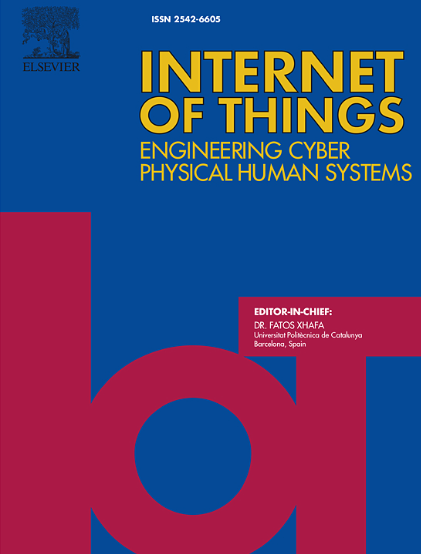Design of an innovative solution to integrate and orchestrate IoT technologies with chatbots for smart home automation
IF 7.6
3区 计算机科学
Q1 COMPUTER SCIENCE, INFORMATION SYSTEMS
引用次数: 0
Abstract
Nowadays, smart homes are rapidly gaining popularity but significant challenges still affect the sector. For instance, optimizing energy usage is essential to fully harness their potentiality. Many existing solutions rely on conventional control methods that require user interaction or need experts to configure complex automatic rules. This paper presents an innovative framework that exploits multiple chatbots to autonomously manage operations in smart homes. The framework acts at all the levels of an IoT system by autonomously: collect real-time data from sensors, interpret data, make decisions based on revealed situations, actuate strategies through actuators, and contact users in case of criticalities. Such an automation is performed through three different types of chatbots, i.e., AutomationBot, SensorBot, and ActuatorBot, each performing dedicated roles in real-time system monitoring, decision-making, and operation management. They autonomously manage and coordinate operations, only escalating issues to the user in critical scenarios, ensuring efficient system functioning with minimal user involvement 24 h a day, 7 days a week. It can be programmed by every kind of user through the provided no-code platform. The system’s effectiveness has been assessed through a series of experiments conducted in a simulated smart home environment developed through various technologies (i.e., MQTT, RabbitMQ, Raspberry Pi, Tiledesk-Chat21) focusing on heat pump management and indoor environmental condition regulation. Our results highlight that the chatbot system could independently monitor, control, and optimize operation of critical devices, maintaining operational reliability and user comfort with manual intervention. The framework represents a significant step toward realizing fully autonomous chatbot-driven smart homes.
设计一种创新的解决方案,将物联网技术与智能家居自动化的聊天机器人集成和协调
如今,智能家居正在迅速普及,但重大挑战仍然影响着该行业。例如,优化能源使用对于充分利用它们的潜力至关重要。许多现有的解决方案依赖于传统的控制方法,这些方法需要用户交互或需要专家配置复杂的自动规则。本文提出了一个利用多个聊天机器人自主管理智能家居操作的创新框架。该框架通过自主方式在物联网系统的所有层面发挥作用:从传感器收集实时数据,解释数据,根据揭示的情况做出决策,通过执行器执行策略,并在危急情况下与用户联系。这种自动化是通过三种不同类型的聊天机器人来实现的,即AutomationBot、SensorBot和ActuatorBot,每一种机器人都在实时系统监控、决策和运营管理中扮演着专门的角色。他们自主管理和协调操作,只在关键情况下将问题升级给用户,确保系统在每周7天,每天24小时以最小的用户参与的情况下有效运行。通过提供的无代码平台,各种用户都可以进行编程。通过在模拟智能家居环境中进行的一系列实验(即MQTT, RabbitMQ, Raspberry Pi, Tiledesk-Chat21),重点是热泵管理和室内环境条件调节,评估了该系统的有效性。我们的研究结果强调,聊天机器人系统可以独立监控、控制和优化关键设备的运行,在人工干预的情况下保持运行可靠性和用户舒适度。该框架是实现完全自主的聊天机器人驱动的智能家居的重要一步。
本文章由计算机程序翻译,如有差异,请以英文原文为准。
求助全文
约1分钟内获得全文
求助全文
来源期刊

Internet of Things
Multiple-
CiteScore
3.60
自引率
5.10%
发文量
115
审稿时长
37 days
期刊介绍:
Internet of Things; Engineering Cyber Physical Human Systems is a comprehensive journal encouraging cross collaboration between researchers, engineers and practitioners in the field of IoT & Cyber Physical Human Systems. The journal offers a unique platform to exchange scientific information on the entire breadth of technology, science, and societal applications of the IoT.
The journal will place a high priority on timely publication, and provide a home for high quality.
Furthermore, IOT is interested in publishing topical Special Issues on any aspect of IOT.
 求助内容:
求助内容: 应助结果提醒方式:
应助结果提醒方式:


